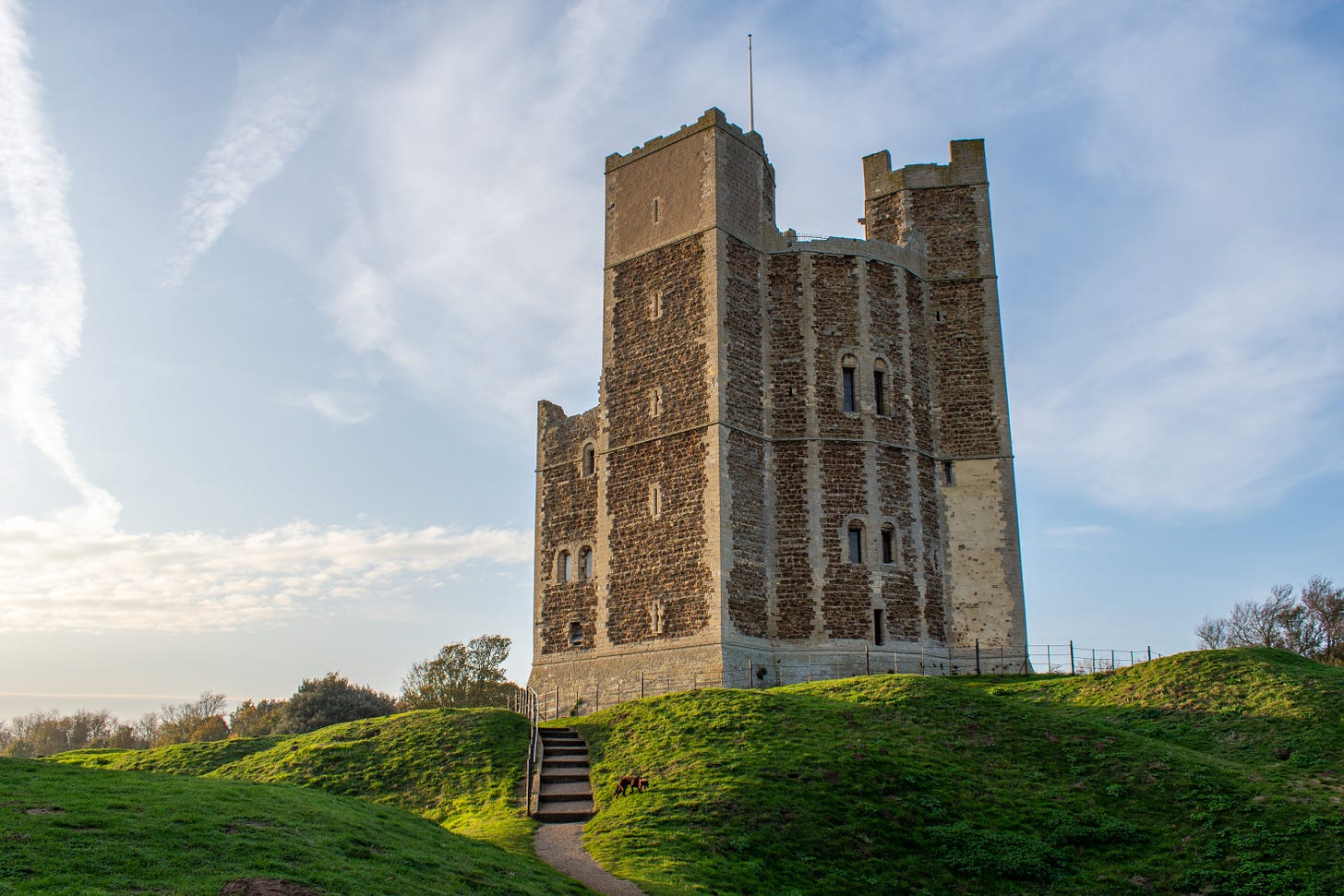Orford Castle-or, rather the Keep (Shutterstock)
Orford Castle, the strong stone sentinel that watches over the Suffolk village of Orford is not so much a castle in the traditional sense but part of one, in this case, a Castle Keep.
A Castle’s Keep is the fortified tower built within the Castle itself.
Imagine the classic child’s drawing of a Castle. It’ll show four turrets at each end of a square shape with connecting walls and a drawbridge in the middle of the facing one. The Keep is that tower like building in the centre that is protected by those four walls and turrets; it is, effectively, the living space where all the day to day activities at any self respecting Castle took place.
The fact that they are referred to as ‘Keeps’ is most appropriate for, in many cases, they are the best or even the only preserved part of a Castle.
In other words, they ‘keep’, long after everything else has fallen into ruin.
One of Norfolk’s best known sites of this type is Castle Rising, which was built in 1140 and is amongst the finest surviving examples of a Castle Keep anywhere in the country. It’s Keep is surrounded by massive defensive earthworks which have also prevailed to this day. Thus, whilst they and the Keep prevails, the rest of the Castle site has not been so fortunate.
Stone Keeps, the last resort for the inhabitants of a Castle if it were to be attacked by aggressive forces therefore had to be well built.
The Keep at Castle Rising. Resolute where all else has turned to dust (Richard Croft/geograph)
Very well built indeed.
This meant that whilst cost was no expense in doing so then, similarly, neither was the time taken for them to be constructed and some may well have taken ten years or more to have been completed.
Orford Castle, with its sweeping views over the adjacent Orford Ness was built between 1165 and 1173 by command of King Henry II ( aka Henry Curtmantle, Henry FitzEmpress, or Henry Plantagenet) with the very emphatic personal remit to consolidate his power in the region.
Not so good King Hal had, clearly, been made aware of the problems that the governing Roman forces had once encountered with Boudicca and didn’t want to suffer a similar fate at the hands of a bunch of rebellious locals with murderous thoughts as far as authority was concerned.
With that in mind, he ensured that Orford was a bit of a showpiece Castle-which meant as an absolute bare minimum, it had to be both imposing and intimidating, a spectacular and very visual symbol of his wealth and power.
This also meant it had to be eye catching and the design of this particular Keep certainly was.
It has a hint of the Byzantine about it, that which takes after the architecture of the Byzantine Empire, a style that was largely influenced by the buildings in Roman and Greek Architecture.
Did Henry see himself as some sort of Emperor figure, sat at the centre of a mighty Castle?
Still dominating the surrounding countryside today. Henry II would be most pleased (Paul Farmer/geograph)
Orford’s Keep has certainly done its patron proud and stood up to the ravages of time. It stands as one of the country’s most complete and unusual keeps with its unique polygonal (a closed shape with straight sides) tower that stands at a height of just under 100 feet and is constructed from at least four different types of stone. Most of the walls are made up of roughly cut blocks of a local mudstone (a fine-grained sedimentary rock whose original constituents were clays or mud) known as septaria, chosen, one suspects because as well as being a resilient building material, the rocks could also be polished and shaped to create a very distinct decorative look.
It is thought to be one of the earliest polygonal tower Keeps to have been built, a departure from the square plan of most of its predecessors, an overall design and look that, if Henry had wanted it to be unique, was certainly successful in achieving.
Orford Castle, a site managed by English Heritage, is a remarkably well preserved ruin which allows visitors the opportunity to explore every nook and cranny from the basement, via the lower and upper halls and onto the roof which affords appropriately majestic views seaward to Orford Ness, a site which I have explored in an earlier blog.
This one is as special and unique a site today as it was in the time of Henry II himself. I think the old boy would be rather pleased about that.






